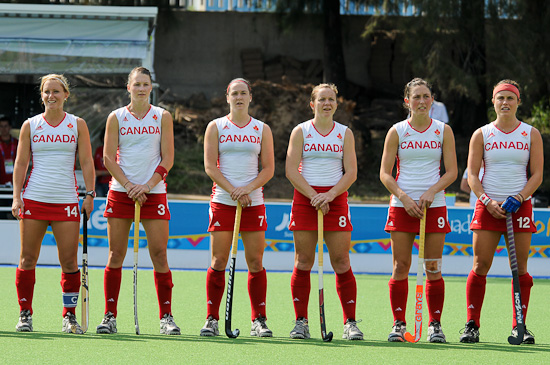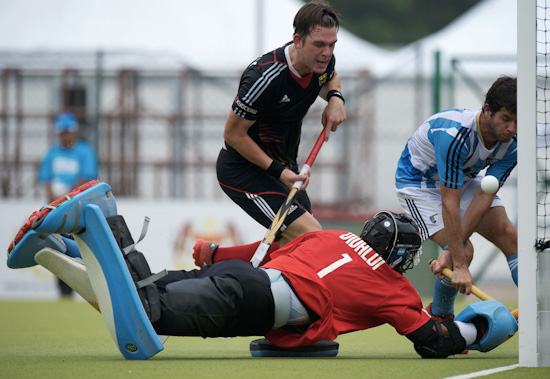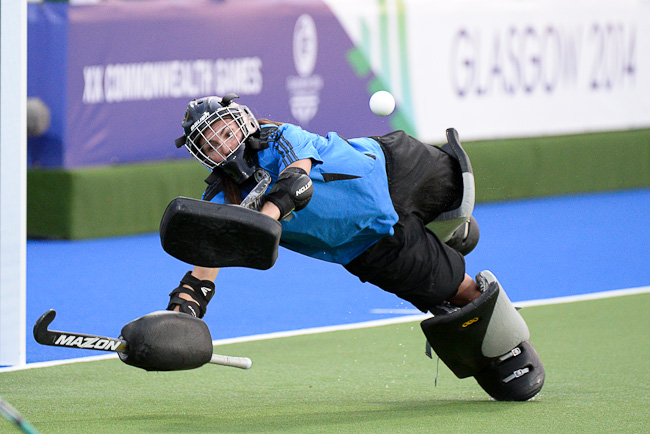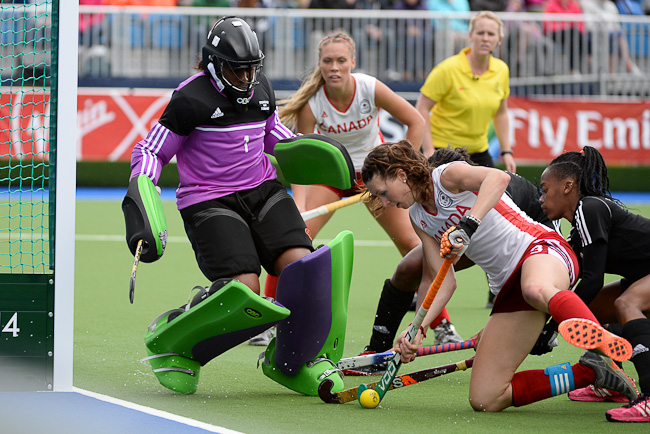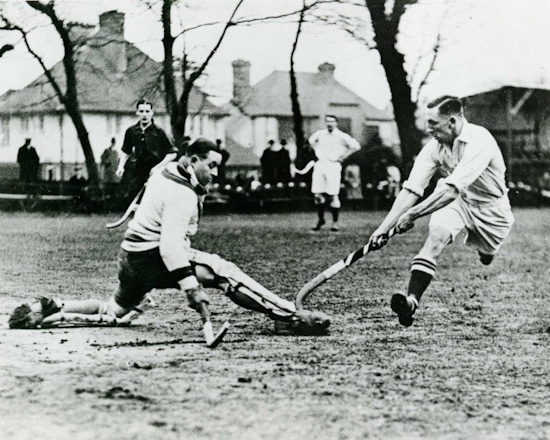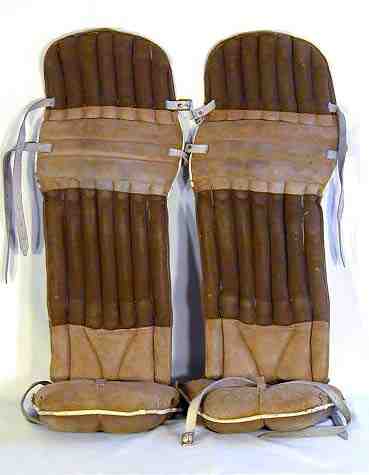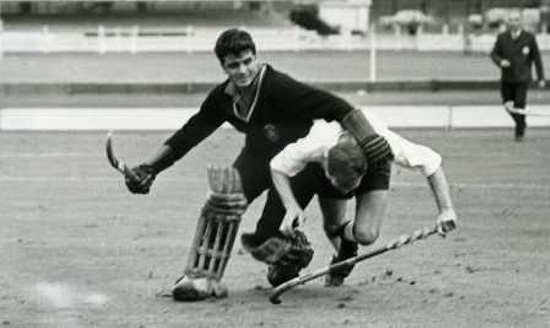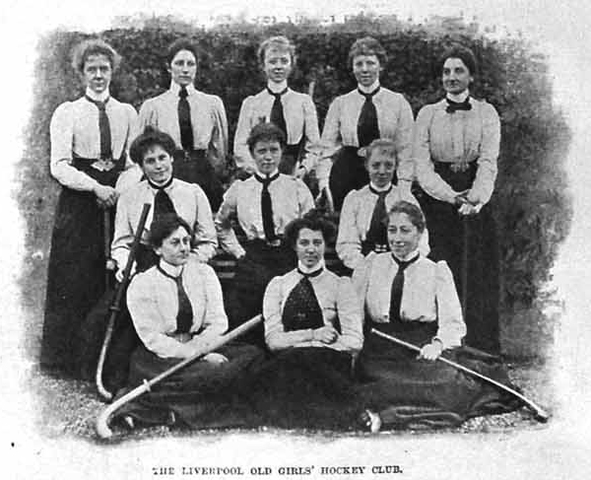
Lightweight, sweat resistant, shock absorbent, stream-lined – just some of the desirable features of today's hockey kit. Field players want to be as unencumbered as possible, while staying completely protected from the hard stick and even harder, fast-travelling ball, while goalkeepers want full body protection but need to retain the ability to dive around the goalmouth and remain agile on their feet.
But looking back into the mists of time and we see that the hockey clothing our great grandparents would have worn would be looking very different.
The modern form of hockey really took off in the late 19th and early 20th century. It was also at this time that women began to realise the health and social benefits of playing sport, and so many hockey clubs that had begun as male clubs, soon had a women’s section as well. However, the social mores of the time dictated that, while women could play a demure form of sport, they should also maintain their modesty and elegance. Long skirts, blouses and hats were de rigueur for sporting women at the end of the 19th and beginning of the 20th century. Over the first decade of the 20th century, the extravagant ruffles and flared puffs disappeared in favour of simpler clothing, but the skirt length remained to the ground, collars were high around the neck and hats were always worn. But change was afoot and women who played sports began to demand clothing of a more practical nature. Cycling and tennis had become fashionable, and this drove the change in sporting fashion. in the 1920s skirts, made specifically for sporting activity, had split legs – so women had a greater freedom of movement – blouses were less fussy and corsets began to be discarded.
Despite the modifications, the problems of long skirts and voluminous blouses are apparent. It was difficult to do anything more than walk quickly, the ball often got caught in the skirt, as did the stick, and playing hockey in full length skirts and long-sleeved blouses was a hot and sweaty business.
The men were slightly better off. Plus four trousers (breeches that stopped just below the knee) were tucked into long socks or stockings, sturdy leather boots for the feet and a shirt were the main dress code. Caps were often worn, but the players certainly had greater freedom of movement as their clothing was less cumbersome.
From the beginning of the 20th century, both men and women wore a rudimentary form of shin pad, usually made from cane and canvas, tucked under their socks. Goalkeepers at this time wore the same clothing as the field players with just a pair of cricket pads to give their legs greater protection from a flying leather ball. Face masks and helmets were a much later addition.
Moving forwards to the 1950s, and we can see how hockey clothing had moved with the times. Boots were studded to help players grip the grassy surface. Men were now wearing shorts, with socks and shin-pads, and the shirts were of a heavy cotton material. For women, dress had made tremendous progress, allowing far greater agility and movement. Hockey for women had become a fast-moving game. Cotton shirts such as the men wore, skirts that ended just below the knees, larger, sturdier shin-pads and canvas boots with moulded studs completed the look.
Kit for field players has continued to develop steadily over the past 60 years. For women, the skirts have risen steadily higher, giving far greater mobility. For the past 15 years, many women’s teams have worn skorts – a combination of a skirt and shorts, which maintains a differentiation from the men’s kit, but is practical and does not impede movement. A further development took place in 2000, when the Australian team of the day appeared in an all-in-one suit for the first time. This has been accepted by some teams, but most teams have stuck with a shirt and skirt combination.
These days, the main consideration for playing kit is its breathability, lightness and streamlined shape. Shirts and shorts are made from fabric that has a high degree of wickability - meaning the sweat is absorbed away from the body.
The player on the field who has very different kit demands is the man or woman between the goal posts. So to find out how kit for goalkeepers has changed in the past 40 years, we spoke to a man who knows, the International Hockey Federation (FIH) President Leandro Negre. The Spaniard represented his country in the 1968 Mexico Olympics, and he recalls his playing days: “There were definitely times during my playing career when I got hurt, and there were times when I wondered what I was doing, as I faced a barrage of shots, with no defenders in sight.”
“Of course,” he added. “So much has changed for goalkeepers in the past 40 years. While the goalkeeping kit is now strong and lightweight, it does have to contend with balls travelling at high speed and hit with incredible force.”
During Leandro’s playing career, the goalkeeper would typically have been wearing pads and kickers that mirrored the cane and canvas worn by cricketers. The gloves were heavy, made of thick leather and wider than normal gloves, but still flexible enough to hold a hockey stick. Helmets were not worn until the 1970s, but the keeper would have worn a face mask - a contraption that looked like a cage over the face, with velcro straps fixed behind the head. Chest protectors, elbow pads, thigh protectors and throat guards are all inventions from the 1980s onwards. It was also in the late 1980s and 1990s that the goalkeepers’ pads changed from cane to light-weight foam. This was an important development as the specialist foam offered great protection but was a fraction of the weight of cane pads.
Fast forward to 2014 and the goalkeeper looks like something from a futuristic movie. Most international goalkeepers choose to wear ice-hockey helmets because of their enhanced resilience; the body armour is a highly-durable foam, the kickers are designed to deflect the ball with force and everything has been designed with move-ability in mind.
Juan Manuel Vivaldi has been the Argentina men’s first choice goalkeeper for more than a decade. He talks us through the extensive kit list that serves to protect the men and women who guard the goal:
- Helmet – Protection and safety comes before anything else. The helmet has to be as light as possible, but with a grille that offers good vision.
- Chestpad, shorts, elbow pads – this is a compromise between protection and freedom of movement. This protection should help prevent broken bones but allow ease of movement. A nasty hit to the hips, shoulders or elbows can put a player out of action for a long time.
- Box (blocker) – this is very important to goalkeepers, who will often choose an ice hockey box as they undergo far more testing than hockey products. (A box is worn by both men and women to protect the pelvic area).
- Kickers – protection is key, but it is also important that the rebound is cleared well and cleanly. Kickers must not be too bulky as they should not impede movement.
- Leg guards - protection is the priority, closely followed by the ability to move quickly. Goalkeepers want a leg guard that protects their calves fully and with a maximum width to give as big a saving area as possible. The kickers must allow the goalkeeper to slide easily.
- Gloves – the right-hand glove allows the keeper to use the stick as an extension of his or her arm.
Much has changed in the game of hockey over the past few decades, most of the change brought about by the introduction of artificial surfaces. The ball can travel at greater speeds and along a truer pathway, which has sped the game up. While training and practice are the obvious areas that will help players perform to their optimum levels of speed and skill, the importance of top quality kit, designed to meet the players demands is obvious. Looking back to playing uniforms of the early 19th century, it is clear that the main change in hockey kit has been a move from conforming to the fashion and societal demands of the day to the practical requirements of the game.
With the game played at break-neck speed and calling upon player fitness and agility, the difference between a thicker fabric and a more streamlined fabric might only be minuscule, but when players are looking for any edge or advantage, then the kit could hold the key.
